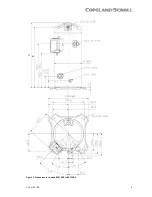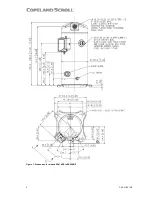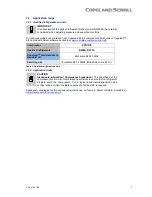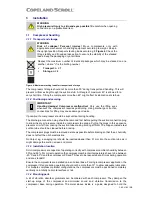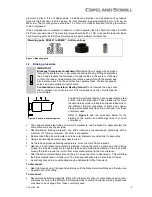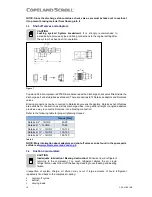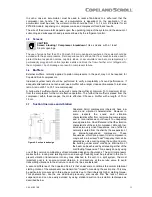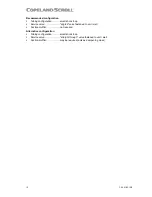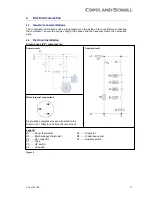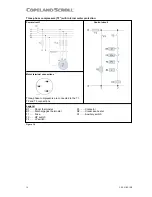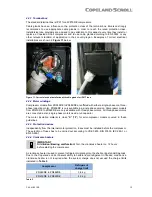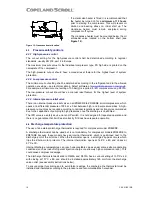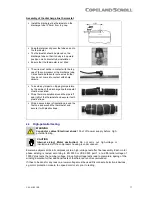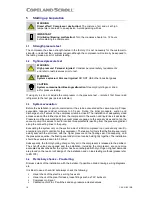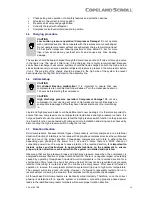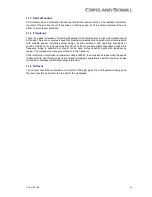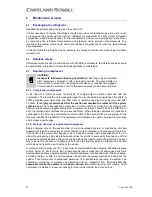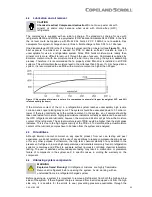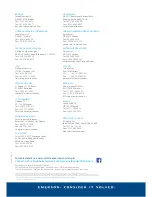
C6.2.41/0219/E
19
▪
Check setting and operation of all safety features and protection devices
▪
All valves in the correct running position
▪
Pressure and compound gauges fitted
▪
Correctly charged with refrigerant
▪
Compressor electrical isolator location & position
5.5
Charging procedure
CAUTION
Low suction pressure operation! Compressor Damage!
Do not operate
with a restricted suction. Do not operate with the low-pressure cut-out bridged.
Do not operate compressor without enough system charge to maintain at least
0.3 bar suction pressure. Allowing pressure to drop below 0.3 bar for more
than a few seconds may overheat scrolls and cause early drive bearing
damage.
The system should be liquid-charged through the liquid-receiver shut-off valve or through a valve
in the liquid line. The use of a filter drier in the charging line is highly recommended. Because
scrolls have discharge check valves, systems should be liquid-charged on both the high and low
sides simultaneously to ensure a positive refrigerant pressure is present in the compressor before
it runs. The majority of the charge should be placed in the high side of the system to prevent
bearing washout during first-time start on the assembly line.
5.6
Initial start-up
CAUTION
Oil dilution! Bearing malfunction!
It is important to ensure that new
compressors are not subjected to liquid abuse. Turn the crankcase heater on
12 hours before starting the compressor.
CAUTION
High discharge pressure operation! Compressor damage!
Do not use
compressor to test opening set point of high-pressure cut-out. Bearings are
susceptible to damage before they have had several hours of normal running
in.
Liquid and high pressure loads could be detrimental to new bearings. It is therefore important to
ensure that new compressors are not subjected to liquid abuse and high-pressure run tests. It is
not good practice to use the compressor to test the high-pressure switch function on the production
line. Switch function can be tested with nitrogen prior to installation and wiring can be checked by
disconnecting the high-pressure switch during the run test.
5.7
Rotation direction
Scroll compressors, like several other types of compressors, will only compress in one rotational
direction. Direction of rotation is not an issue with single-phase compressors since they will always
start and run in the proper direction. Three-phase compressors will rotate in either direction
depending upon phasing of the power to L1, L2 and L3. Since there is a 50/50 chance of
connecting power in such a way as to cause rotation in the reverse direction,
it is important to
include notices and instructions in appropriate locations on the equipment to ensure
proper rotation direction is achieved when the system is installed and operated.
Observing that suction pressure drops and discharge pressure rises when the compressor is
energized allows verification of proper rotation direction. There is no negative impact on durability
caused by operating three-phase Copeland Scroll compressors in the reversed direction for a
short period of time (under one hour) but oil may be lost. Oil loss can be prevented during reverse
rotation if the tubing is routed at least 15 cm above the compressor. After several minutes of
operation in reverse, the compressor protection system will trip due to high motor temperature.
The operator will notice a lack of cooling. However, if allowed to repeatedly restart and run in
reverse without correcting the situation, the compressor will be permanently damaged.
All three-phase Scroll compressors are identically wired internally. Therefore, once the correct
phasing is determined for a specific system or installation, connecting properly phased power
leads to the identified compressor terminals will ensure proper rotation direction.

